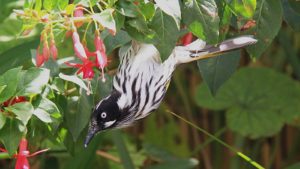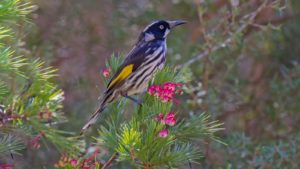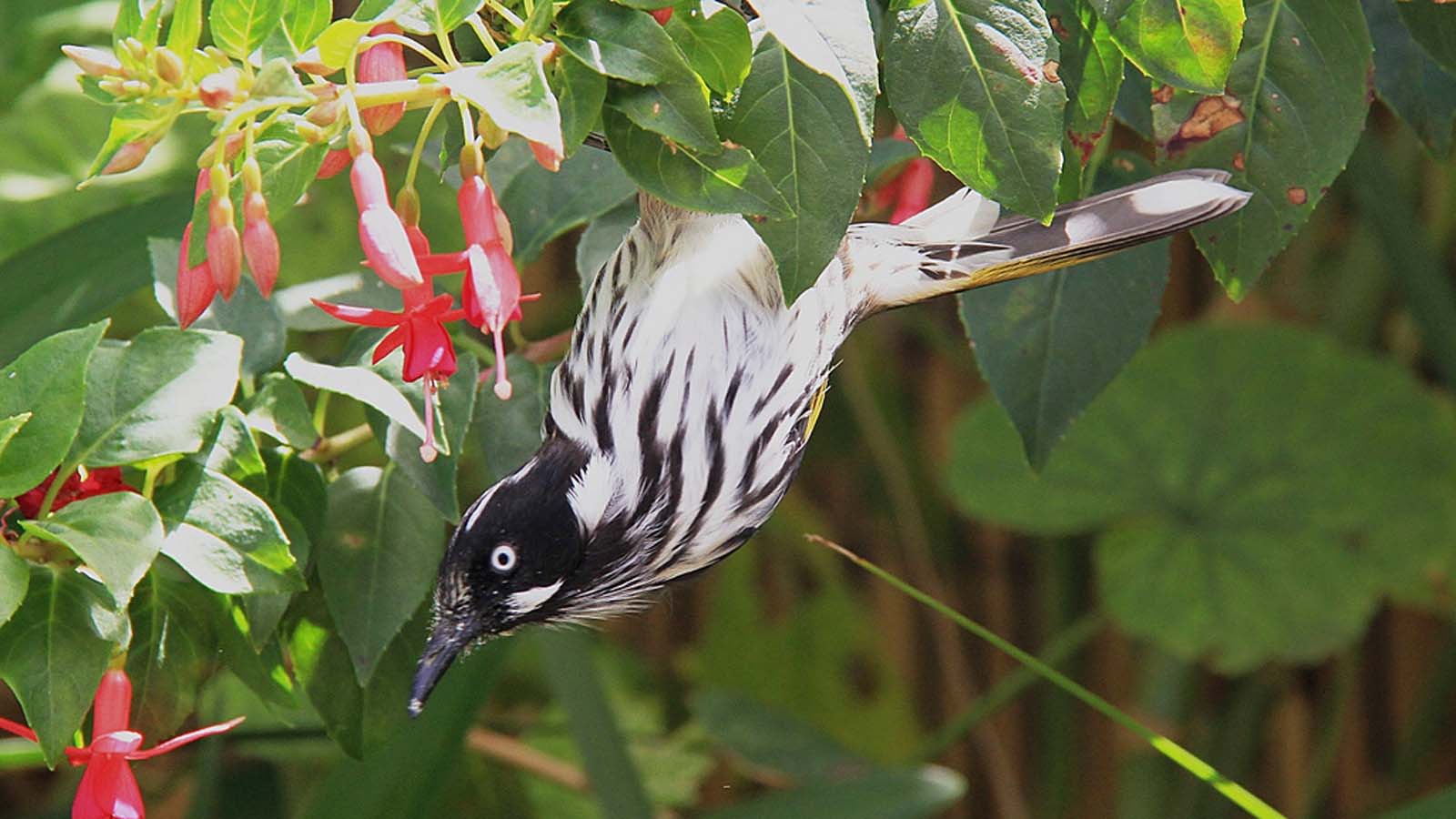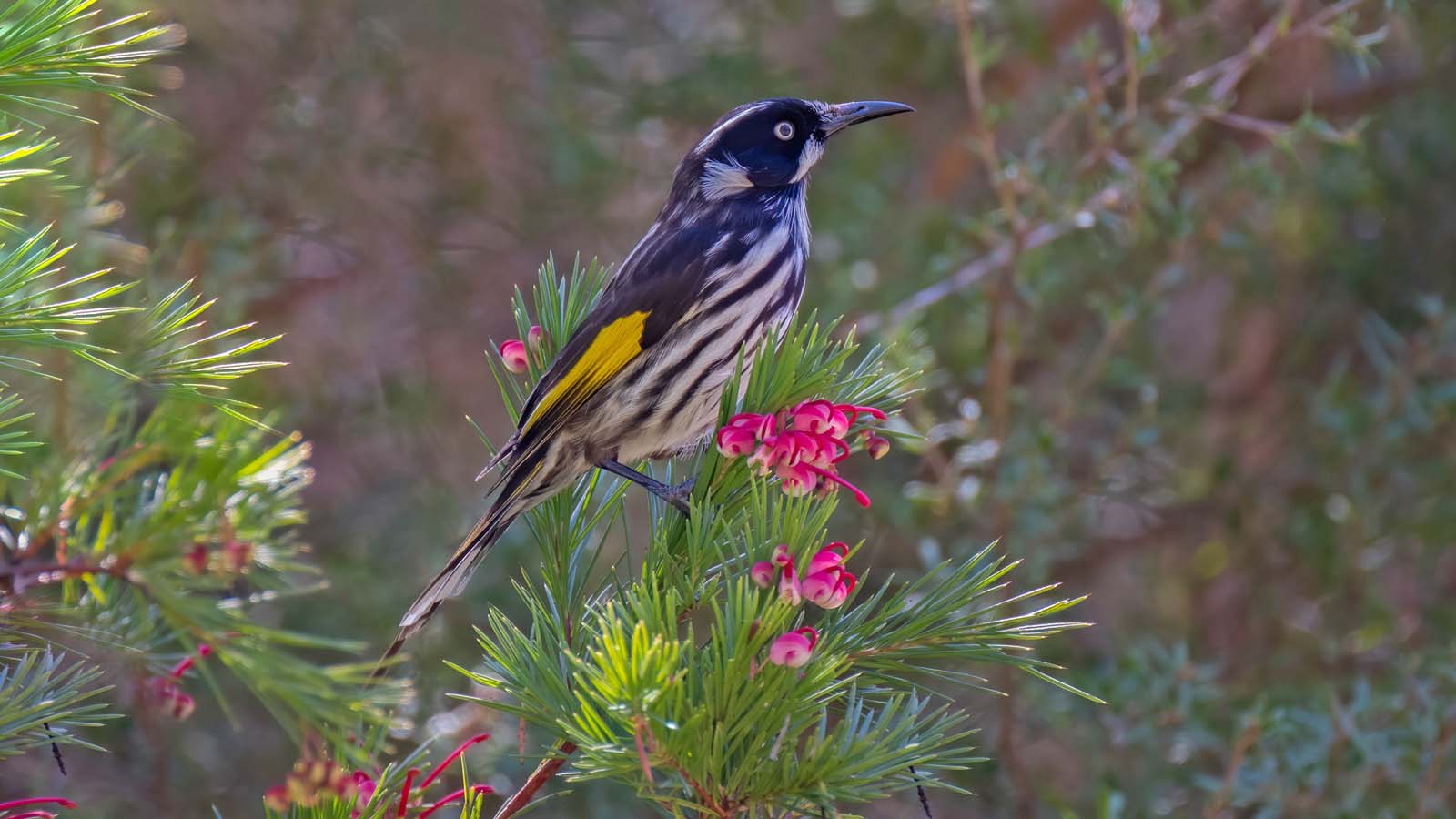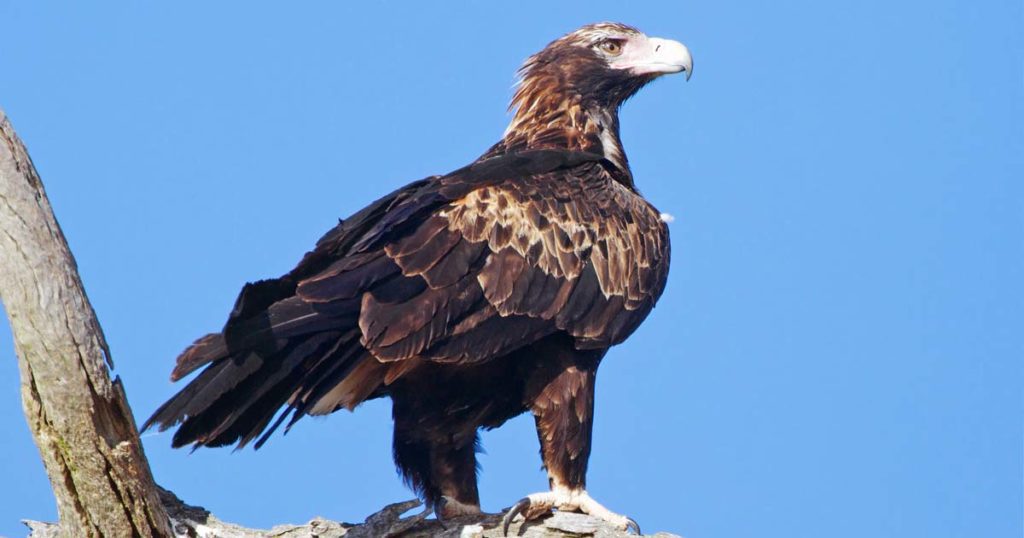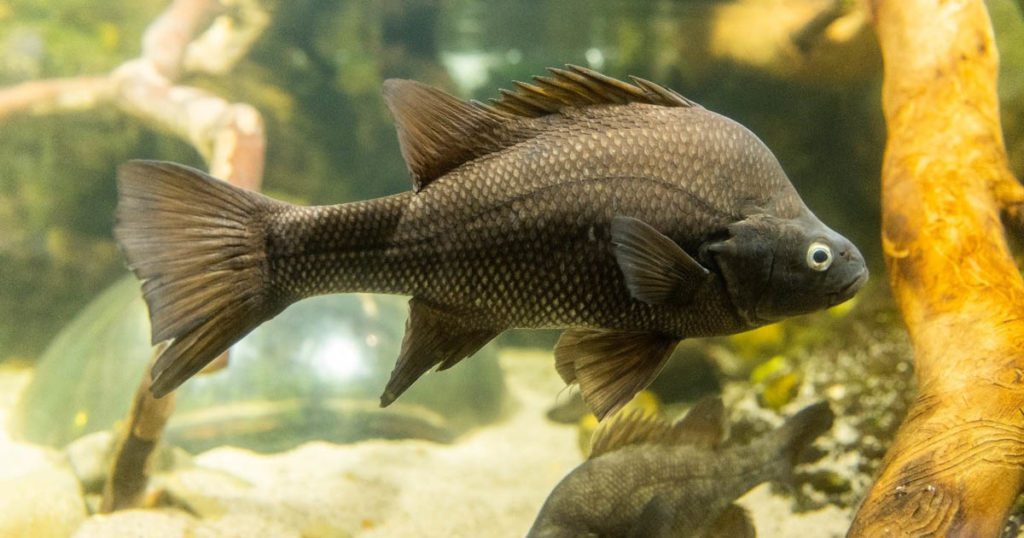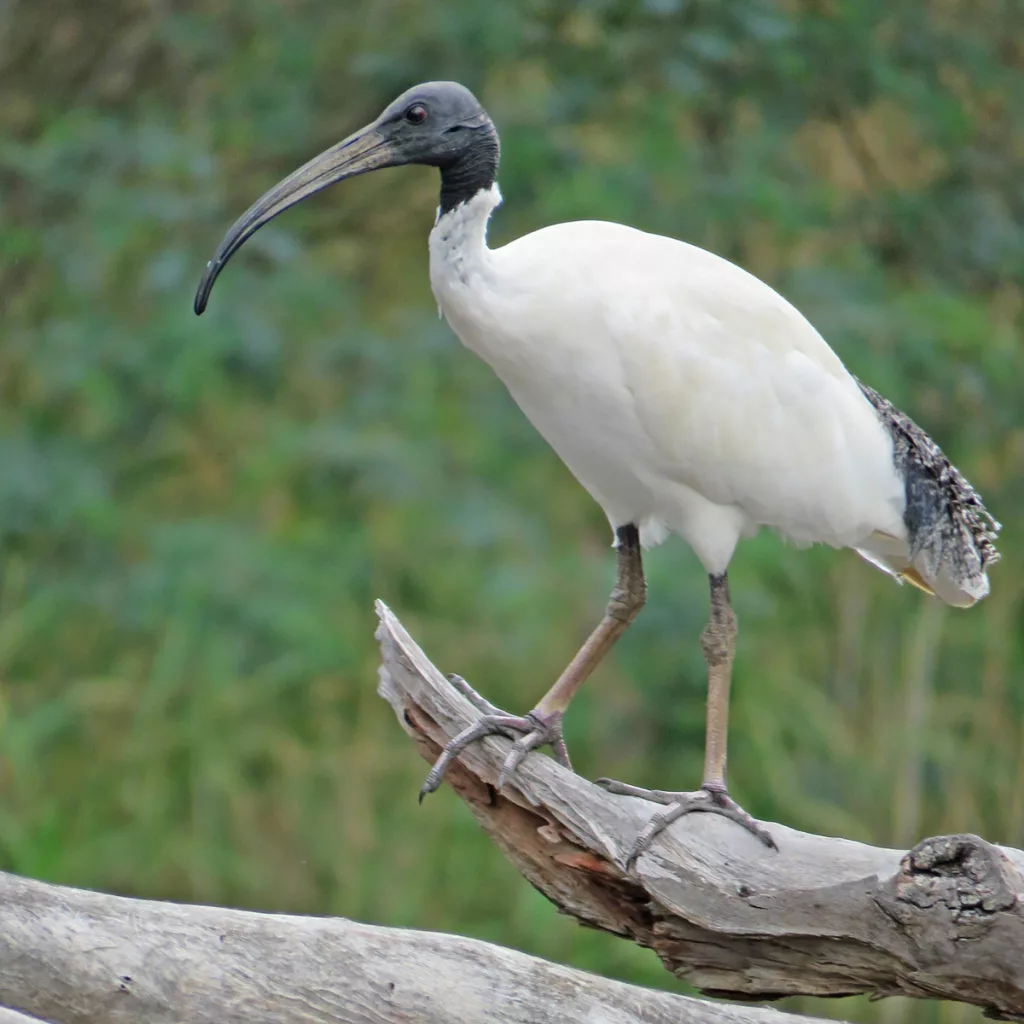by Carol Hopkins
Anyone with a native garden in the Murrindindi Shire is sure to be familiar with New Holland honeyeaters, especially if there is an abundance of plants such as grevillias and banksias, their favourite foods. With a fine, curved beak and a long, brush-tipped tongue, this little bird is perfectly designed for slurping up nectar from the inner recesses of even the tiniest flowers. In fact, it’s brushed-tipped tongue is so efficient it can absorb all of a flower’s nectar in one second.
But nectar is not the only source of food for these energetic and endearing birds. They are also very adept at snatching insects from the air and can often be seen performing awe-inspiring acrobatics in pursuit of this prey. Fruit, sap and honeydew – a sweet, sticky substance excreted by sap-sucking insects – may also form part of their diet.
“New Holland” might seem to be a strange name to give an Australian native bird, but it was the name given to our country by the first Dutch explorers to reach our shores. Subsequently, some birdwatchers have been heard to light-heartedly call the bird the “Dutch honeyeater”.
New Holland honeyeaters are easy to identify. Predominately black and white, with a striped breast and a startlingly white eye, they also sport yellow patches on their wings and yellow margins on their tails. The sexes are similar in appearance, although the female is slightly smaller than the male. Juvenile birds tend to be more brown than black and have grey, not white, eyes.
These birds are found throughout the margins of eastern and southern Australia from Brisbane to just north of Perth. They are not found in the dry interior of the country. Their favourite habitats are eucalypt forests and woodlands, coastal heathlands, parks, gardens and golf courses, particularly when there is an abundance of plants in flower.
If they are around, it’s hard not to notice them, as they tend to flit rapidly and flamboyantly from flower to flower issuing a series of high pitched “chik” or “pseet” calls. While they are not too bothered by human presence, they are quite merciless in chasing other small birds out of their territory. Even larger birds have been known to be “mobbed” by a group of these flapping and chattering honeyeaters.
New Holland honeyeaters breed a couple of times year, usually in autumn and spring, when plants such as eucalypts, banksias, correas, callistemons, melaleucas and grevilleas are in flower. They build a cup-shaped nest made of grasses, twigs and bark, which they then bind together with spiders’ webs and line with soft, fluffy plant material. The nest is placed in a large bush or tree anywhere from one to six metres above the ground. The female lays two to three eggs which she incubates for two weeks. Once the eggs are hatched, both sexes feed the chicks until they are ready to leave the nest after another two weeks.
The average life expectancy of these honeyeaters is two years, although bird-banding studies have discovered individual birds that are over fourteen years old. Their conservation status is classed as “secure”, meaning there is little or no threat to their populations at the moment.
The New Holland honeyeater makes for a cheeky and cheerful presence in any garden. The best way to make your garden attractive to these delightful birds is to plant a dense understory of flowering plants. While native species such as banksias, grevilleas, bottlebrushes and correas are firm favourites, these birds are known to feed from over a hundred different varieties of flowering plants, including non-natives such as fuchsias and camellias.
Having a bird bath, and keeping it regularly topped up with fresh water, is another “must” for attracting these birds. They just love to have a bath! Even when there aren’t many plants in flower you will find the New Hollands – as well as other birds – coming to have a dip and a drink.
Finally, you will need to keep your pets, especially your cats, inside. Because these birds often feed on low bushes, they are a prime target for cats. If you take these few simple steps you will have, in no time, lots of New Holland honeyeaters bringing colour, movement and joy to your garden.
